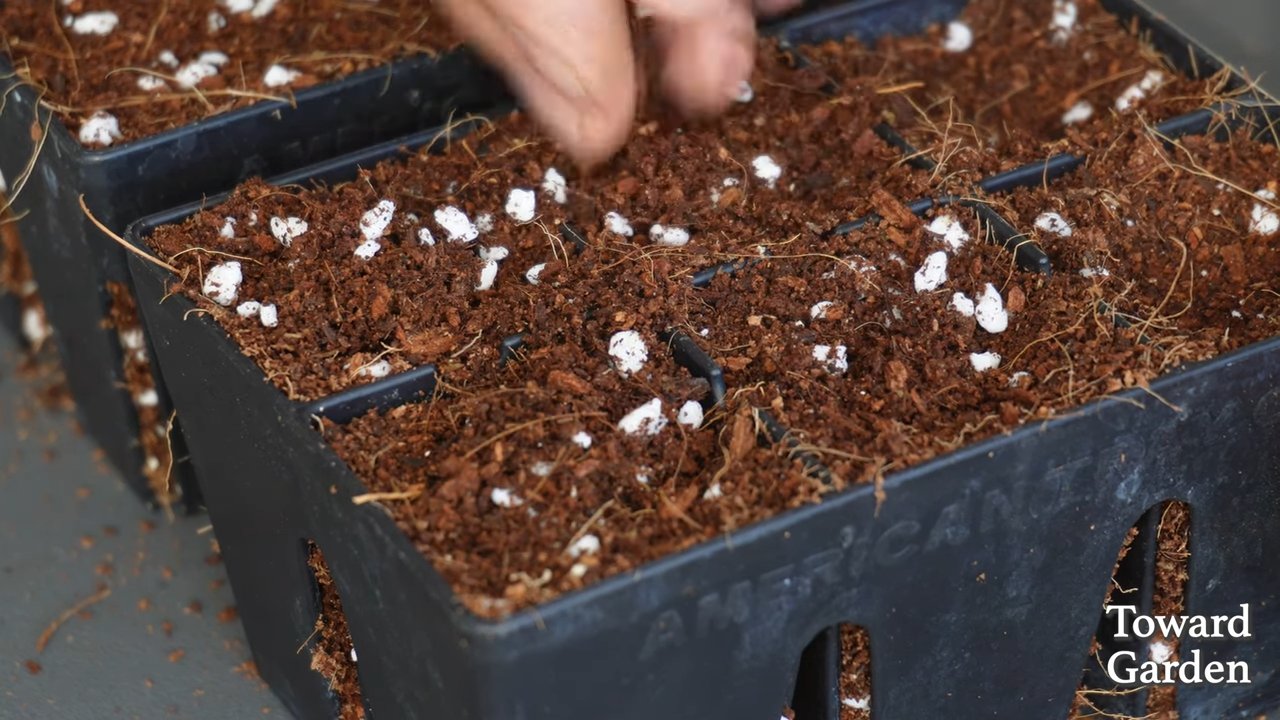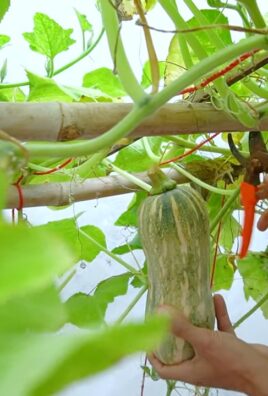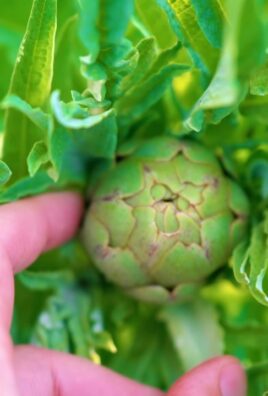Grow Leeks at Home? Absolutely! Imagine stepping into your backyard and harvesting fresh, flavorful leeks, ready to elevate your culinary creations. Forget those bland, store-bought options – with a few simple tricks, you can cultivate these delicious alliums right in your own garden.
For centuries, leeks have been a staple in cuisines worldwide, dating back to ancient Egypt where they were revered and even depicted in hieroglyphics. The Romans, known for their sophisticated palates, also embraced leeks, spreading their cultivation throughout Europe. Today, this versatile vegetable continues to be cherished for its mild, onion-like flavor and nutritional benefits.
But why should you bother with DIY leek growing? Well, for starters, it’s incredibly rewarding! There’s nothing quite like the satisfaction of nurturing a plant from seed to harvest. Plus, growing your own leeks allows you to control the quality and freshness of your produce, ensuring you’re consuming healthy, pesticide-free ingredients. And let’s be honest, who doesn’t love saving a little money at the grocery store? This DIY guide will provide you with all the essential tips and tricks to successfully grow leeks at home, even if you’re a complete beginner. So, grab your gardening gloves, and let’s get started!

Growing Delicious Leeks Yourself: Your DIY Guide for Your Own Garden
Hey garden friends! Do you feel like growing your own leeks? It’s easier than you think and tastes unbelievably fresh. I’ll show you how to harvest your own leeks with simple tools and a little patience. Let’s get started!
What You Need for Growing Leeks:
- Leek seeds or young plants: Both work great. Seeds are cheaper, but young plants save time.
- Seed-starting mix: For starting seeds indoors, a special seed-starting mix is ideal as it is low in nutrients and promotes root formation.
- Pots or seed trays: For starting seeds indoors.
- Garden trowel or planting shovel: For transplanting and planting.
- Garden soil: Well-prepared, loose, and nutrient-rich soil is important.
- Compost or organic fertilizer: For soil improvement.
- Watering can or garden hose: for regular watering.
- Mulching material (optional): Straw or grass clippings to retain moisture in the soil and suppress weeds.
- Patience: Leeks take some time to grow!
The Preparation: The Foundation for a Bountiful Harvest
Before we begin the actual growing, good preparation is everything. This applies to both starting the seeds and preparing the garden soil.
Starting Seeds Indoors (optional, but recommended)
Starting seeds indoors gives the leeks a head start and allows for an earlier harvest.
- Sowing: Fill your seed trays or pots with seed-starting mix. Sprinkle the leek seeds evenly and cover them lightly with soil (about 0.5 cm / 0.2 inches).
- Watering: Gently moisten the soil with a spray bottle or watering can. The soil should be damp, but not wet.
- Location: Place the seed trays in a bright and warm spot (approx. 18-20°C / 64-68°F). A windowsill is ideal.
- Germination: Germination usually takes 10-14 days. Keep the soil moist during this time.
- Pricking Out: Once the small leek plants are 5-6 cm (2-2.5 inches) tall and have their first true leaves, it’s time to prick them out. This means you carefully take the seedlings out of the seed tray and transplant them into individual pots. Be careful not to damage the roots.
Soil Preparation: A Feast for the Leeks
Leeks love loose, nutrient-rich soil. Good soil preparation is therefore crucial for a successful harvest.
- Loosen the soil: Thoroughly loosen the soil with a digging fork or a spade. Remove stones and weeds in the process.
- Improve the soil: Work compost or organic fertilizer into the soil. This improves the soil structure and provides the leeks with important nutrients.
- Check the pH value: Leeks prefer a pH value between 6.0 and 7.0. If necessary, you can adjust the pH with lime (for soil that is too acidic) or sulfur (for soil that is too alkaline).
Cultivation: Into the Garden Bed!
Now comes the exciting part: planting the leeks in the garden bed!
- Planting time: The best time to plant out is when the young plants are about 15-20 cm (6-8 inches) tall and there is no longer a risk of frost (usually from mid-May onwards).
- Planting distance: Plant the leeks in rows with a spacing of about 15 cm (6 inches) between plants and 30 cm (12 inches) between rows.
- Planting holes: Use a trowel to dig planting holes deep enough to accommodate the roots of the leek plants.
- Planting: Carefully place the leek plants in the planting holes and fill them with soil. Gently press the soil down.
- Watering in: Water the freshly planted leeks thoroughly.
Care: So the Leeks Thrive
For your leeks to thrive, they need regular care.
- Watering: Leeks need regular water, especially during dry periods. Make sure the soil is always slightly moist. However, avoid waterlogging.
- Weeding: Regularly remove weeds that could rob the leeks of nutrients and light.
- Hilling: As the leeks grow larger, you can regularly “hill them up.” This means you pile soil up around the stems. This makes the white shaft of the leek longer and more tender.
- Fertilizing: Fertilize the leeks regularly with organic fertilizer or compost during the growing season.
- Pest protection: Leeks can be infested by various pests, such as the leek moth or the onion fly. Check your plants regularly and combat pests with biological agents if necessary.
The Harvest: The Reward for Your Efforts
After about 6-8 months, the time has finally come: you can harvest your own leeks!
- Harvest time: The leeks are ready to harvest when they have reached a sufficient size (depending on the variety).
- Harvesting method: Carefully pull the leeks out of the ground or lift them with a digging fork.
- Cleaning: Remove the outer, withered leaves and clean the leek under running water.
Extra Tips for Growing Leeks:
- Companion planting: Leeks get along well with carrots, strawberries, and tomatoes.
- Crop rotation: Do not grow leeks in the same spot every year to prevent diseases and pests.
- Overwintering: Leeks are hardy and can overwinter in the garden bed. If necessary, protect them from heavy frost with a layer of mulch.
- Storage: Leeks can be kept in the refrigerator for a few days. You can also freeze them.
Common Problems and Solutions:
- Yellow leaves: Can indicate a nutrient deficiency or waterlogging. Fertilize the leeks and ensure good drainage.
- Leek moth: The larvae of the leek moth eat into the leaves and stems of the leek. Combat them with biological agents or a crop cover net.
- Onion fly: The larvae of the onion fly feed on the roots of the leek. Combat them with nematodes or a crop cover net.
I hope this guide helps you to successfully grow your own leeks. It’s truly a great feeling to harvest and enjoy vegetables from your own garden. Happy gardening

Conclusion
So, there you have it! Growing leeks at home is not only achievable but also incredibly rewarding. From the satisfaction of nurturing a plant from seed to the unparalleled flavor of freshly harvested leeks in your favorite dishes, this DIY project is a game-changer for any home cook or gardening enthusiast. Forget those bland, overpriced leeks from the supermarket – with a little patience and effort, you can cultivate a thriving patch of these culinary gems right in your own backyard or even on your balcony.
The beauty of this method lies in its simplicity and adaptability. Whether you’re a seasoned gardener or a complete novice, the steps outlined are easy to follow and require minimal specialized equipment. Plus, the ability to control the growing environment means you can tailor the process to your specific climate and preferences.
Consider experimenting with different varieties of leeks to discover your personal favorites. ‘Giant Musselburgh’ is a classic choice known for its impressive size and robust flavor, while ‘Bandit’ offers a milder, sweeter taste. For those with limited space, try growing leeks in containers, ensuring they have adequate drainage and sunlight. You can even stagger your planting schedule to enjoy a continuous harvest throughout the growing season.
Don’t be afraid to get creative with your leek cultivation. Companion planting can also enhance your leek growing experience. Carrots and onions are excellent companions, as they deter leek moths and onion flies, respectively. Marigolds can also help repel nematodes, which can damage leek roots.
Beyond the practical benefits, growing your own leeks offers a deeper connection to your food. It’s a chance to appreciate the natural processes that bring sustenance to our tables and to reduce your reliance on industrial agriculture. Plus, it’s a fantastic way to get outdoors, engage in a relaxing activity, and enjoy the fruits (or rather, vegetables) of your labor.
We wholeheartedly encourage you to embark on this DIY adventure and experience the joy of growing leeks at home. The taste of homegrown leeks is simply unmatched, and the sense of accomplishment you’ll feel is truly priceless. So, grab your seeds, prepare your soil, and get ready to enjoy a bountiful harvest of delicious, homegrown leeks.
Once you’ve tried this method, we’d love to hear about your experience! Share your tips, tricks, and photos in the comments below. Let’s build a community of home gardeners and inspire others to discover the magic of growing their own food. Happy gardening!
Frequently Asked Questions (FAQ)
What is the best time of year to start growing leeks?
The ideal time to start growing leeks depends on your climate. In general, leeks are a cool-season crop, so they thrive in milder temperatures. For most regions, starting seeds indoors 8-10 weeks before the last expected frost is a good approach. This allows the seedlings to develop a strong root system before being transplanted outdoors in the spring. If you live in a warmer climate with mild winters, you can start seeds in the late summer or early fall for a winter harvest. Check your local gardening resources for specific recommendations based on your region’s climate.
How much sunlight do leeks need?
Leeks require at least 6 hours of direct sunlight per day to thrive. Choose a planting location that receives ample sunlight throughout the day. If you’re growing leeks in containers, make sure to place them in a sunny spot on your patio or balcony. If you live in a particularly hot climate, providing some afternoon shade can help prevent the leeks from bolting (going to seed prematurely).
What type of soil is best for growing leeks?
Leeks prefer well-drained, fertile soil that is rich in organic matter. Before planting, amend your soil with compost or well-rotted manure to improve its structure and nutrient content. Leeks also prefer a slightly acidic to neutral soil pH, ideally between 6.0 and 7.0. You can test your soil pH using a home testing kit or by sending a sample to your local agricultural extension office.
How often should I water my leeks?
Leeks need consistent moisture to grow properly. Water them deeply whenever the top inch of soil feels dry to the touch. Avoid overwatering, as this can lead to root rot. During hot, dry weather, you may need to water your leeks more frequently. Mulching around the plants can help retain moisture in the soil and reduce the need for frequent watering.
How do I prevent pests and diseases from affecting my leeks?
Several pests and diseases can affect leeks, including leek moths, onion flies, and various fungal diseases. To prevent these problems, practice good garden hygiene by removing any dead or diseased plant material from the area. Crop rotation can also help prevent the buildup of soilborne diseases. Companion planting with carrots and onions can deter leek moths and onion flies. If you notice any signs of pests or diseases, treat them promptly with appropriate organic pesticides or fungicides.
When are leeks ready to harvest?
Leeks are typically ready to harvest 100-120 days after planting. You can harvest them at any size, depending on your preference. Smaller leeks will have a milder flavor, while larger leeks will have a more robust taste. To harvest, simply loosen the soil around the base of the plant and gently pull it out of the ground. You can also use a garden fork to lift the leeks out of the soil.
Can I grow leeks in containers?
Yes, leeks can be successfully grown in containers, making them a great option for gardeners with limited space. Choose a container that is at least 8-10 inches deep and wide to accommodate the leek’s root system. Use a well-draining potting mix and ensure that the container has drainage holes to prevent waterlogging. Water the leeks regularly and fertilize them every few weeks with a balanced fertilizer.
How do I blanch leeks to make them whiter?
Blanching leeks involves excluding light from the lower portion of the plant to create a whiter, more tender stem. There are several ways to blanch leeks. One method is to hill up soil around the base of the plants as they grow, gradually covering more and more of the stem. Another method is to use cardboard tubes or plastic pipes to surround the stems, blocking out the light. Start blanching the leeks a few weeks before you plan to harvest them.
Can I save seeds from my leeks?
Yes, you can save seeds from your leeks, but it’s a two-year process. Leeks are biennials, meaning they complete their life cycle over two years. In the first year, they produce vegetative growth (the edible stem and leaves). In the second year, they flower and produce seeds. To save seeds, allow a few of your best leeks to overwinter in the ground. In the spring, they will send up flower stalks. Allow the flowers to dry on the plant, then harvest the seed heads and extract the seeds.
What are some delicious ways to use homegrown leeks?
Homegrown leeks are incredibly versatile and can be used in a wide variety of dishes. They can be sautéed, roasted, grilled, or added to soups, stews, and casseroles. Leeks are also a key ingredient in classic dishes like vichyssoise (a cold leek and potato soup) and leek and potato pie. Their mild, onion-like flavor pairs well with a variety of ingredients, including potatoes, cheese, cream, and herbs. Don’t be afraid to experiment and discover your own favorite ways to enjoy your homegrown leeks!




Leave a Comment